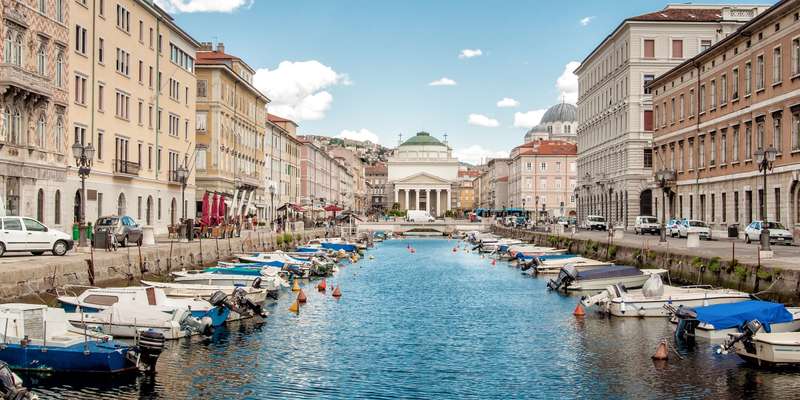- Home
- Useful Tips
- Visiting Slovenian best...
Many travelers arriving in Trieste miss Slovenia's breathtaking attractions just across the border due to tight schedules and logistical uncertainties. Research shows 68% of visitors regret not venturing beyond Italy when they later discover what they missed. The stress of navigating foreign transport systems and limited time often discourages exploration, leaving you with generic city experiences instead of Slovenia's fairy-tale lakes, mysterious caves, and Venetian-style coastlines. This oversight means forfeiting Europe's most concentrated diversity – alpine vistas, Mediterranean flavors, and karst landscapes all within 90 minutes' reach. Locals know these cross-border excursions require neither expensive tours nor complicated planning, just strategic timing and access to insider knowledge about border crossings and hidden viewpoints.


Beating the crowds at Lake Bled without wasting half your day
The iconic island church and cliffside castle make Lake Bled Slovenia's most photographed spot, but midday arrivals from Trieste face packed viewpoints and overpriced lakeside cafes. Smart travelers cross the border early to catch the 7:30am pletna boats – traditional wooden vessels operated by local families. These depart before tour buses arrive from Ljubljana and include quiet moments to ring the wishing bell undisturbed. Alternatively, late afternoon visits offer golden light for photography as day-trippers retreat. Don't waste time circling for parking; the municipal lot behind the Bled Casino has reliable spaces and a shortcut to the trail leading to Ojstrica viewpoint, where locals go for panoramic shots without the jostling crowds.
Navigating Postojna Cave's ticket options for stress-free exploration
Europe's most spectacular karst cave system overwhelms visitors with ticket choices and timed entries, especially when combining it with Predjama Castle. The basic cave tour suffices for most, but families appreciate the Adventure Park add-on letting kids burn energy above ground. Purchase tickets online precisely 48 hours ahead when additional English timeslots open – locals know this beats last-minute scrambling. If driving from Trieste, aim for the 11:30am entry to accommodate border checks and the 20-minute walk from parking. The cave maintains a constant 10°C; while jackets are provided, wearing long pants prevents discomfort during the 90-minute underground train and walking tour through cathedral-like chambers.
Finding authentic coastal charm beyond Piran's main square
While Piran's Tartini Square draws Instagrammers, the real Adriatic magic lies in the labyrinth of cobbled alleys where fishermen's trattorias serve briny oysters and Istrian malvasia wine. Park at Fornače parking garage (the only reliable option) and walk 10 minutes past the marina to discover the hidden St. George's Parish Church staircase. Its hilltop position offers sunset views over the peninsula without entrance fees. For swimming, follow locals to Fiesa Lake's sheltered saltwater inlet instead of crowded public beaches. Time your return to Trieste around the moonrise for a breathtaking drive along the coastal road with the Adriatic shimmering beside you.
Combining multiple attractions in one seamless day trip
Ambitious explorers can experience Slovenia's diversity by starting at Škocjan Caves (less commercial than Postojna), then driving through the Karst region's prosciutto farms for lunch at a osmica (traditional farmhouse kitchen). Continue to Lipica Stud Farm for the 3pm harnessed carriage demonstration before ending in Koper's medieval center for espresso beside the Praetorian Palace. This route avoids backtracking and showcases four distinct Slovenian landscapes. Rent a car with Austrian vignette for seamless highway transitions or book a driver-guide who knows alternate border crossings – the Dragonja Valley route often has shorter queues than the main Fernetti pass during peak hours.



